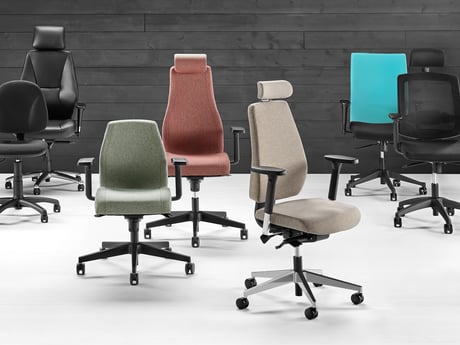How to reduce the risk of workplace lifting injuries

Injuries caused by incorrect manual handling and lifting activities are one of the leading contributors to work-related musculoskeletal disorders (MSDs), which account for around a third of all workplace injuries.
While it is not possible to avoid all manual lifting, there are measures that you can put into place to reduce the risk of injury, such as safety training, medical check-ups, an optimised work environment and ergonomic lifting equipment to aid handling.
Training
Ensure employees receive adequate training on proper lifting techniques. Inform workers about the risk factors and how injuries can occur, making sure that this training is adapted to their specific work environment and tasks. You should also let workers know how to report injuries and what to do in the event of an accident. A trainer should assess new staff to identify any concerns and ensure they are lifting safely.
How to lift safely
- Plan before lifting. Assess the weight of the load; if the weight is not clearly marked, test it by moving one corner. If in doubt about the weight, do not lift the goods: use a lifting aid or get help from another worker. Make sure you have a clear path and somewhere to set the load down.
- Adopt a safe and stable lifting position with your feet slightly apart and close to the object, one slightly in front of the other to maintain balance. Centre yourself in front of the load.
- Get a good grip on the load using both hands. If you start to lose your grip, set the load down safely and reposition yourself before lifting again.
- Bend your knees and lift straight up. Let your legs do the most work.
- Keep the load close to your body.
- Avoid twisting or leaning sideways. Keep your shoulders and hips aligned. If you need to turn, make sure you move your feet first so that you turn your entire body.
- Put the load down safely by bending your knees. If it is necessary to position the load precisely, do so once you have placed the load down
- If you are lifting with a partner, make sure that you lift and put the load down at the same time. Remember that communication is key.
The work environment
Even where lifting is unavoidable, there are numerous steps you can take to make the work environment and the tasks as safe as possible for workers.
- Improve the workplace layout by reducing carrying distances and ensuring workers have a clear path from A to B without obstructions, slopes or steps.
- Prevent workers from having to twist or stoop to lift the load by providing lifting aids that raise goods so that loads only have to be moved on one level; keeping loads close to the body between shoulder and knee height will reduce the risk of injury.
- Reduce load weights and sizes by splitting goods into smaller packages wherever possible.
- Make sure workers can get a good grip on the goods by fitting handles to the packaging.
- Ensure that deadlines are achievable so that workers do not push themselves to the point of injury, and provide frequent breaks.
Lifting equipment
Using material handling equipment and mechanical lifting equipment will reduce the amount of manual handling necessary and put less strain on workers. Depending on the tasks, this could include anything from sack trucks and box dollies to pallet trucks, work positioners and lift tables. Remember that it is not just the weight of the goods that poses a risk but also the frequency of the lifting and the position from which the goods need to be moved, so lighter duty lifting aids such as trolleys and dollies are as important as forklifts and pallet positioners. Staff will need to be trained on how to use the lifting aids safely.
Medical assessments
Ensure employees who frequently perform manual handling tasks receive regular medical check-ups. Make sure that workers have the physical strength to perform the tasks required. Encourage employees to report early symptoms of MSDs so that action can be taken to prevent further injury.


